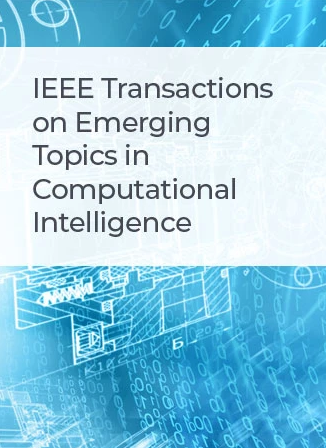Leveraging Pixel Difference Feature for Deepfake Detection
IF 5.3
3区 计算机科学
Q1 COMPUTER SCIENCE, ARTIFICIAL INTELLIGENCE
IEEE Transactions on Emerging Topics in Computational Intelligence
Pub Date : 2025-03-21
DOI:10.1109/TETCI.2025.3548803
引用次数: 0
Abstract
The rise of Deepfake technology poses a formidable threat to the credibility of both judicial evidence and intellectual property safeguards. Current methods lack the ability to integrate the texture information of facial features into CNNs, despite the fact that fake contents are subtle and pixel-level. Due to the fixed grid kernel structure, CNNs are limited in their ability to describe detailed fine-grained information, making it challenging to achieve accurate image detection through pixel-level fine-grained features. To mitigate this problem, we propose a Pixel Difference Convolution (PDC) to capture local intrinsic detailed patterns via aggregating both intensity and gradient information. To avoid the redundant feature computations generated by PDC and explicitly enhance the representational power of a standard convolutional kernel, we separate PDC into vertical/horizontal and diagonal parts. Furthermore, we propose an Ensemble Dilated Convolution (EDC) to explore long-range contextual dependencies and further boost performance. We introduce a novel network, Pixel Difference Convolutional Network (PDCNet), which is built with PDC and EDC to expose Deepfake by capturing faint traces of tampering hidden in portrait images. By leveraging PDC and EDC in the information propagation process, PDCNet seamlessly incorporates both local and global pixel differences. Comprehensive experiments are performed on three databases, FF++, Celeb-DF, and DFDC to confirm that our PDCNet outperforms existing approaches. Our approach achieves accuracies of 0.9634, 0.9614, and 0.8819 in FF++, Celeb-DF, and DFDC, respectively.利用像素差分特征进行深度伪造检测
Deepfake技术的兴起对司法证据和知识产权保障的可信度构成了巨大威胁。目前的方法缺乏将面部特征的纹理信息整合到cnn的能力,尽管虚假内容是微妙的和像素级的。由于固定的网格核结构,cnn描述详细细粒度信息的能力有限,难以通过像素级细粒度特征实现准确的图像检测。为了解决这个问题,我们提出了一种像素差卷积(PDC),通过聚合强度和梯度信息来捕获局部的内在细节模式。为了避免PDC产生的冗余特征计算,并明显增强标准卷积核的表示能力,我们将PDC分为垂直/水平和对角部分。此外,我们提出了一个集成扩展卷积(EDC)来探索远程上下文依赖关系并进一步提高性能。我们介绍了一种新颖的网络,像素差分卷积网络(PDCNet),它由PDC和EDC构建,通过捕捉隐藏在人像图像中的微弱篡改痕迹来暴露Deepfake。通过在信息传播过程中利用PDC和EDC, PDCNet无缝地融合了局部和全局像素差异。在FF++、Celeb-DF和DFDC三个数据库上进行了全面的实验,以证实我们的PDCNet优于现有的方法。我们的方法在FF++、Celeb-DF和DFDC中分别达到了0.9634、0.9614和0.8819的精度。
本文章由计算机程序翻译,如有差异,请以英文原文为准。
求助全文
约1分钟内获得全文
求助全文
来源期刊

IEEE Transactions on Emerging Topics in Computational Intelligence
Mathematics-Control and Optimization
CiteScore
10.30
自引率
7.50%
发文量
147
期刊介绍:
The IEEE Transactions on Emerging Topics in Computational Intelligence (TETCI) publishes original articles on emerging aspects of computational intelligence, including theory, applications, and surveys.
TETCI is an electronics only publication. TETCI publishes six issues per year.
Authors are encouraged to submit manuscripts in any emerging topic in computational intelligence, especially nature-inspired computing topics not covered by other IEEE Computational Intelligence Society journals. A few such illustrative examples are glial cell networks, computational neuroscience, Brain Computer Interface, ambient intelligence, non-fuzzy computing with words, artificial life, cultural learning, artificial endocrine networks, social reasoning, artificial hormone networks, computational intelligence for the IoT and Smart-X technologies.
 求助内容:
求助内容: 应助结果提醒方式:
应助结果提醒方式:


